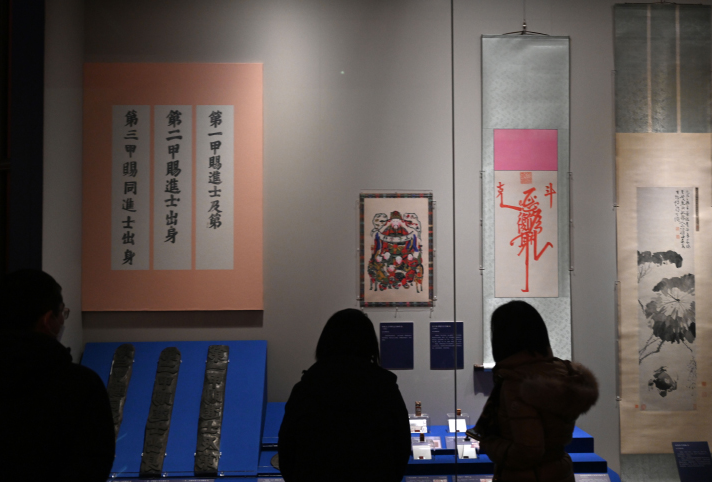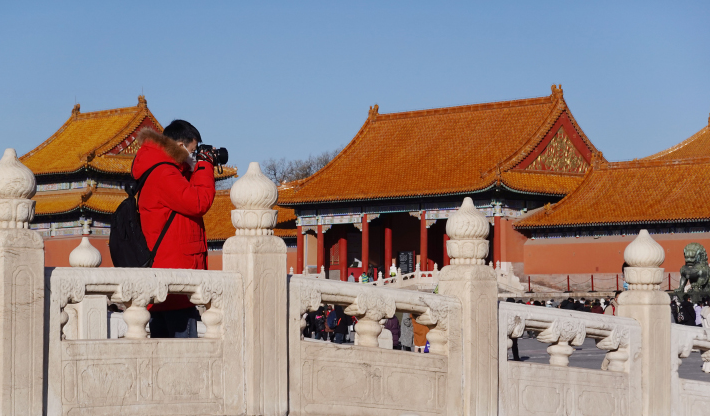New Palace Museum branch to provide better conditions for cultural relics exhibition and protection

A new branch of the Palace Museum is expected to emerge on Beijing's outskirts over the next few years to better showcase the museum's cultural relics.
After nearly a decade of preparation, construction of the new branch began last December. The Palace Museum is housed within the Forbidden City—China's royal palace during the Ming (1368-1644) and Qing (1644-1911) dynasties. The year after China's last emperor, Puyi, left the royal residence in 1924, it became a public museum.
Located in Xiyuhe, a village in Haidian District, about 30 km from the Forbidden City, the northern branch will cover more than 100,000 square meters, including an exhibition space of over 60,000 square meters for cultural relics and more than 35,000 square meters for relic restoration, according to the museum.

Necessary expansion
The Forbidden City is the largest ancient architectural complex in China and also the biggest and best-preserved wooden architectural complex in the world. It covers an area of 720,000 square meters, with more than 70 palaces and over 9,000 rooms. Those who have been to the Forbidden City know that it's far too large to take in all in one day. Despite the immense size of the current location, there are compelling reasons why a new branch is necessary.
First of all, building a new venue is necessary to put more artifacts on display and the presentation of cultural artifacts comes with precise requirements for temperature, humidity and lighting. The ancient buildings in the Forbidden City are unable to meet these requirements and upgrading them would do unnecessary damage to the wooden architecture.
Additionally, modern museums require large centralized spaces to host large exhibitions. However, much of the Forbidden City is made up of smaller rooms and buildings, and the pillars
within the wooden architecture also affect the effect of exhibitions by blocking views.
Du Haijiang, Deputy Curator of the Palace Museum and chief supervisor of the construction of the northern branch, said in an interview with China Central Television, broadcast on January 26, that calligraphy works and paintings couldn't be put on display during rainy seasons, in winter or summer, because of strict temperature and humidity requirements. Some silk and cotton artifacts currently cannot be exhibited at all because the museum doesn't have the necessary environment for their exhibition.
Du said fewer than 10,000 or 0.5 percent of the museum's 1.86 million cultural artifacts are put on display each year. This rate is very low compared with other large comprehensive museums in the world. For instance, the rate is 8 percent at the Louvre Museum in Paris and 1.8 percent for the Metropolitan Museum of Art in New York.
"After the completion of the new northern branch, the number of relics on display each year will increase to 20,000 to 30,000," Du said.
In addition, to further facilitate the exhibition of cultural artifacts, the new branch will also provide more space for storing the museum's artifacts. Sun Hua, a professor at Peking University's School of Archaeology and Museology, told Chinese news portal Jiemian that although the Palace Museum has built underground warehouses to store artifacts, those stored in wooden architecture are subject to fire hazards, as well as natural aging. "It's hard to improve storage conditions and apply more advanced technologies to protect the relics within the Forbidden City," Sun said.
According to Du, some ancient buildings in the Forbidden City are being used as offices and others are used as warehouses. The construction of the northern branch will enable many of these buildings to be cleared out and better protected.
However, Du said not all of the Palace Museum's artifacts will be moved into the new branch. The two sites will store different artifacts according to their environmental requirements.
The construction of the new branch will also help solve the museum's lack of space for the restoration and repair part of the cultural relics. The Palace Museum is known for its advanced restoration techniques. For instance, its techniques for renovating and replicating bronzeware are part of the national intangible cultural heritage. However, Du said the museum doesn't have enough space to restore large artifacts. "The new branch will not only provide large spaces for restoring large artifacts but will also feature equipment to hoist large artifacts for restoration," Du said.
In addition, visitors to the new branch will be able to view the artifact restoration process and gain first-hand experience of the workers' exquisite techniques, Du said.
Tailored design
The northern branch site is special because it was previously a kiln during the Qing Dynasty, where many construction materials for the Forbidden City, such as glazed tiles and bricks, were fired. Moreover, it was located in today's Haidian District, where many royal palaces and gardens were located during the Ming and Qing dynasties, such as the still extant Summer Palace and Old Summer Palace, both formerly summer retreats for royalty.
Sun said during the Ming and Qing, some Forbidden City artifacts were on display at the royal palaces and gardens in Haidian. Therefore, to some extent, the new branch will perform a function similar to those palaces and gardens in terms of displaying the Forbidden City's relics.
Du said the new branch will not be a replication of the Forbidden City's architecture but a modern museum incorporating some of its elements. In 2015, the Palace Museum invited designers to submit designs for the new branch. The winning design, created by the Beijing Institute of Architectural Design, incorporates elements such as the Forbidden City's red walls and golden roofs into a modern structure.
While the Forbidden City is symmetrical along a north-south axis, the new site features an east-west central axis.
The east-west central axis was adopted based on the shape of the site. The site of the northern branch is long and narrow, stretching 900 meters from east to west, but only 60 meters at the narrowest point from north to south. The exhibition halls will be in the east of the complex, while the warehouses and offices will be in the west.
"We want to pay tribute to the Forbidden City by designing the east-west central axis and to convey the historical and cultural values of the Forbidden City," Zhang told Beijing Daily.
Unlike the Forbidden City, the northern branch will be built within gardens. Zhang said the site is surrounded by natural waters and forests, which makes it possible for visitors to view the exhibitions and enjoy the natural scenery as well.
Related articles
-
 Marco Polo commemorations deepen Sino-Italian cultural exchanges
Marco Polo commemorations deepen Sino-Italian cultural exchangesMore
-
 The pure intentions of a Beijing-based purifier manufacturer
The pure intentions of a Beijing-based purifier manufacturerMore
-
 The Highlights of Asian Games
The Highlights of Asian GamesMore
-
 Panda-monium sweeps China
Panda-monium sweeps ChinaMore
-
 Sculpture Exhibition Reliving China’s Aerospace History Held in Beijing
Sculpture Exhibition Reliving China’s Aerospace History Held in BeijingMore
-
 2024 China-ASEAN Youth Culture Week and the 7th China-ASEAN Youth Symposium Successfully Held
2024 China-ASEAN Youth Culture Week and the 7th China-ASEAN Youth Symposium Successfully HeldMore
